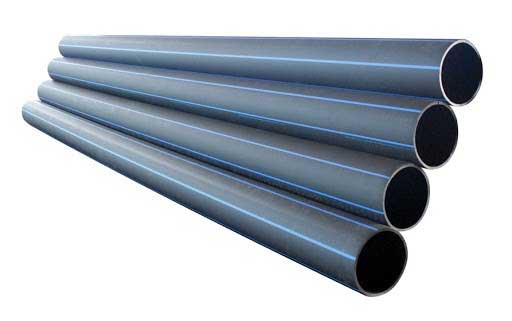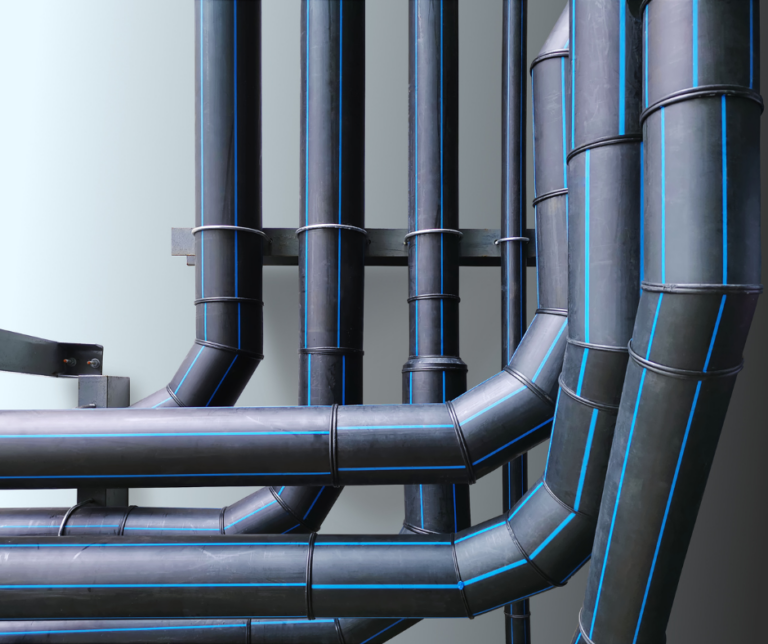The Essential Steps for Effective Setup of HDPE Pipe in Your Next Project
Effective installment of HDPE pipeline requires cautious preparation and implementation. Secret steps include assessing project needs, preparing the website, and selecting correct signing up with techniques. Each stage plays a vital function in guaranteeing the stability and efficiency of the pipeline. Comprehending these important actions can greatly affect the general success of the job - Pipe Supplier American Plastics Midland. The nuances of each action might hold the secret to getting over common obstacles dealt with during setup.
Understanding the Conveniences of HDPE Pipe
High-density polyethylene (HDPE) pipeline provides many benefits that make it a favored selection for various applications. Its high resistance to deterioration and chemicals assurances sturdiness in requiring atmospheres, significantly extending the life-span of installments. Furthermore, HDPE's adaptability permits less complicated setup, particularly in difficult surfaces, as it can flex without damaging. The lightweight nature of HDPE pipeline streamlines transportation and handling, lowering labor costs during installation.
Additionally, HDPE pipe is recognized for its reduced rubbing coefficient, which enhances fluid circulation and reduces power usage. Its seamless construction minimizes the threat of leaks, contributing to far better resource administration and environmental management. In enhancement, HDPE is recyclable, lining up with lasting methods and lowering environmental influence. In general, the combination of strength, adaptability, and eco-friendliness makes HDPE pipe a remarkable selection for a vast array of projects, from water distribution to industrial applications.
Preparation Your HDPE Pipeline Setup
When intending an installment of HDPE pipeline, careful factor to consider of several essential factors is vital to secure an effective job. First, job managers should evaluate the certain demands of the pipeline, including the planned use, flow prices, and ecological problems. Understanding these parameters will certainly assist the selection of appropriate pipeline measurements and material grade.
Next, timelines need to be established, considering purchase routines and any prospective hold-ups. Sychronisation with regional authorities for licenses and governing compliance is likewise crucial. Furthermore, a thorough spending plan must be prepared, including all costs related to products, labor, and equipment.
It is vital to engage a qualified team experienced in HDPE pipe installation. Their knowledge will aid alleviate risks, warranty adherence to sector standards, and inevitably add to the job's success. Detailed planning prepares for a smooth installation process and lasting efficiency of the HDPE piping system.
Preparing the Website for Setup
Proper website preparation is crucial for the successful installment of HDPE pipe. Before setup begins, the site must be thoroughly evaluated to guarantee it satisfies all essential needs. This consists of surveying the ground for existing structures, utilities, and prospective risks that might restrain the installation process.

Right elevation and positioning ought to be established to maintain a consistent slope for drain purposes. Appropriate water drainage around the installment website is likewise necessary to stop water accumulation, which can lead to problems down the line.
Strategies for Joining HDPE Pipings
Accomplishing a trusted connection in between HDPE pipelines is important for making sure the stability and longevity of the setup. Various techniques exist for joining these pipes, each suited for various job demands. Fusion welding is one of one of the most common methods, making use of heat to bond the pipeline finishes together, producing a seamless and sturdy link. This method can be additional categorized right into socket fusion and butt blend, depending on the pipe setups.
Mechanical fittings are another choice, using clamps and threaded ports to join areas of HDPE pipe. While generally faster to mount, they might require extra upkeep in time. Electrofusion is a customized technique that includes making use of electric current to warmth and fuse the pipelines through specifically designed fittings, making certain a strong bond. Selecting the suitable joining method is critical, as it directly influences the general efficiency and dependability of the HDPE piping system in the designated application.
Checking and Evaluation of Installed Pipes
The screening and examination of installed HDPE pipes are critical to guaranteeing their capability and long life. This process incorporates aesthetic inspection strategies, pressure screening techniques, and leakage discovery treatments to determine potential problems. By using these methods, professionals can validate the integrity of the installation before it is taken into use.
Visual Evaluation Techniques
Utilizing effective visual examination techniques is crucial for ensuring the stability of set up HDPE pipelines. Inspectors ought to methodically examine all noticeable sections of the pipeline to determine any type of indicators of damage, misalignment, or improper setup. Secret indicators to analyze include joint honesty, surface abnormalities, and links. Assessors may utilize tools such as multiplying glasses or video cameras to boost visibility and information. It is vital to look for indications of environmental tension, such as twisting or too much bending, which could endanger performance. Constant paperwork of findings allows for tracking adjustments with time and aids overview essential repair services. By adhering to well-known visual examination protocols, task teams can especially lower the threat of future failings and guarantee lasting dependability of the piping system.
Stress Examining Approaches
Aesthetic examination works as a preliminary action, yet it is not sufficient by itself to assure the performance of installed HDPE pipes. Stress screening approaches are vital for guaranteeing the honesty of these systems. Typically, hydrostatic testing is utilized, where the pipelines are loaded with water and subjected to pressure levels above the designated operating stress. This approach aids recognize weak points or possible leakages. Pneumatically-driven testing can additionally be made use of, although it lugs better threats due to the compressibility of air. No matter the technique picked, adhering to sector requirements and safety protocols is crucial. After conducting stress tests, comprehensive documents is needed to confirm the outcomes and validate that the installment meets all operational requirements before continuing to the next phase of the task.

Drip Detection Procedures
How can one assure that installed HDPE pipes are without leakages? Efficient leakage discovery treatments are crucial to safeguard the honesty of the system. Aesthetic inspections ought to be carried out, looking for indicators of water accumulation or soil disintegration around pipe joints. Following this, stress testing can here confirm the system's toughness. An usual method is the hydrostatic examination, where water is introduced under pressure, monitoring for decreases that show prospective leakages. In addition, advanced technologies, such as acoustic sensors or infrared thermography, can discover leaks that might not show up. Regular tracking and maintenance further add to the long life of HDPE pipelines, guaranteeing they remain leak-free throughout their operational life-span. Appropriate documentation of these procedures is vital for conformity and future reference.
Upkeep Tips for Long-Term Efficiency
To ensure the long life of HDPE pipes, establishing a normal inspection routine is crucial. This proactive strategy enables for the early detection of potential issues, lessening costly repairs. Additionally, carrying out proper cleaning methods will certainly help preserve peak efficiency and stop buildup that can influence performance.
Regular Evaluation Set Up
HDPE pipes are understood for their durability and resistance to corrosion, developing a normal inspection schedule is necessary for guaranteeing their long-term efficiency. Regular assessments aid recognize prospective issues such as leakages, joint stability, and environmental effects that might influence the pipeline's performance. It is suggested that inspections happen at the very least biannually, or extra regularly in atmospheres with severe problems. American Plastics HDPE Pipe Manufacturing. During these evaluations, visual checks should be performed to discover indications of wear or damages. Additionally, using modern technology such as ultrasonic testing can supply further insights right into the pipeline's problem. By applying a structured assessment timetable, job supervisors can proactively deal with problems, thus extending the lifespan of HDPE pipes and preserving system effectiveness
Appropriate Cleansing Techniques
Correct cleaning strategies play a crucial function in maintaining the lasting efficiency of HDPE pipes. Regular cleaning prevents the build-up of debris, debris, and biofilm, which can lead to clogs and reduced circulation effectiveness. Operators should employ methods such as high-pressure water jetting or foam cleansing to effectively get rid of impurities without damaging the pipe surface. It is crucial to stay clear of using rough chemicals that might degrade HDPE material. Additionally, set up upkeep checks need to consist of aesthetic evaluations for any type of indicators of wear or damages. Appropriately educated workers must execute these cleaning processes, guaranteeing conformity with security and ecological regulations. By implementing these practices, the lifespan of HDPE pipes can be considerably prolonged, making certain optimal efficiency throughout their functional life.
Regularly Asked Inquiries
What Are the Environmental Influences of HDPE Pipeline Production?
The environmental influences of HDPE pipe production consist of greenhouse gas discharges, energy intake throughout production, prospective plastic contamination, and difficulties in reusing. However, HDPE's longevity and resistance to rust can reduce some ecological worries.
How Does HDPE Pipe Contrast to Other Materials?

What Devices Are Needed for HDPE Pipeline Installation?
Vital devices for HDPE pipe installment include a fusion device, pipe cutters, shovels, measuring tape, and security gear. Appropriate tools guarantees reliable, safe handling and setup, adding to the job's total success and stability.
Exist Any Type Of Specific Rules for HDPE Pipe Installment?
Details laws for HDPE pipe installation differ by region, usually regulated by regional, state, or government codes. Compliance with these regulations guarantees security, environmental management, and performance, making adherence important for effective task results.
Can HDPE Piping Be Recycled After Use?
Yes, HDPE pipes can be recycled after use. Their polycarbonate nature permits reprocessing, making them appropriate for reusing right into brand-new products. This sustainability element adds to ecological conservation and advertises circular economic situation methods in building.